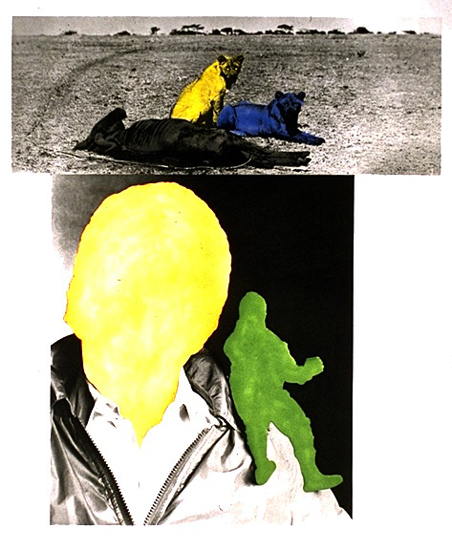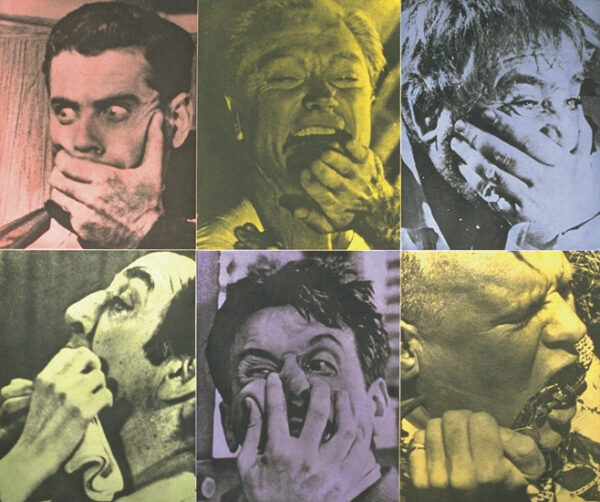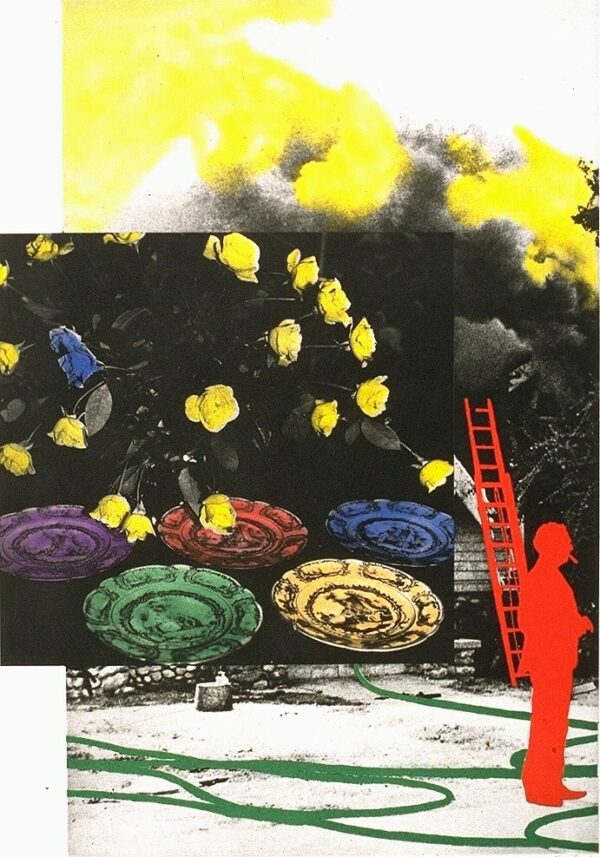“In his activities both as an art teacher and as an internationally renowned artist,” wrote Eleanor Heartney in Art in America in 2005, “John Baldessari has long been recognized as one of the progenitors of postmodern art.” Baldessari was born in National City, just south of San Diego, California in 1931. After earning both a BA and an MA from San Diego State College, he was living a quiet life in National City in the 1950’s , raising his family and teaching. He said that before he was thirty he thought of art as “vacation, not vocation.” That initially casual attitude gave him the freedom to make art whatever he wanted it to be, and he wound up changing how the world thinks about art. He hired a sign painter to print signs that told people how to evaluate pictures. He thought that more people are used to looking at magazines and newspapers than paintings, so he decided to begin working with texts and photographs to make art more accessible to people. He was looking for what he called “more of a common language.”
In a 1993 interview, Baldessari told Constance Lewallen, “You can always read every piece I do in terms of grappling with order and disorder, colliding one against the other. Order is not the order we think it is. There’s always something about to erupt, like the L.A. riots.”
Baldessari’s work is collage based. He placed images in cut-out shapes, or removed images and put others in their places. His unique formal logic slows down the flood of photographic images we experience each day. David Pagel in The New York Times wrote, “Unlike most types of collage, Baldessari’s does not function by overlapping fragments or forcing things together to create an overarching narrative. In his art, everything occupies its own space.”
Teaching was always important to Baldessari. He taught at Cal Arts from its founding in 1970 to 1988 and also at the University of California, Los Angeles. One of his famous early pieces involved students, who were directed to copy and re-copy the title “I Will Not Make Any More Boring Art.”(1971) Baldessari’s wry pedagogic style earned him the title, “The World’s Tallest Leprechaun.” Baldessari is often credited with helping to make Los Angeles an internationally recognized center of contemporary art, as well as a place where artists choose to continue teaching even after their careers would have allowed them to quit.
A lifelong interest in Goya’s aquatints led to the important print project “Ich Habe es Gesehen/I Saw It – Baldessari and Goya,” published by Graphische Sammlung in 1997. He has published prints with Crown Point Press, Gemini GEL, and Brooke Alexander Editions.
Baldessari showed in New York at Sonnabend Gallery for many years and joined Marian Goodman Gallery in 1997. He participated in the Whitney Biennial four times, as well as the 1997 Venice Biennale, and in 2009 he won the Golden Lifetime Achievement Award at the 53rd Venice Biennale. He has been the subject of numerous retrospective museum exhibitions, which he described as “like falling off a 20 story building, watching your whole life pass in front of you,” including, The New Museum in New York, Centre Pompidou in Paris, and the Museum of Contemporary Art San Diego. His work is held in many public collections including the Museum of Modern Art in New York, the San Francisco Museum of Modern Art, the Smithsonian Museum in Washington, D.C., the Tate Collection, London, and the Pompidou Center in Paris, France. In 2014, Baldessari was awarded the National Medal of Arts by President Obama.
John Baldessari passed away in January, 2020, at the age of 88. His estate is represented by Spruth Magers Gallery.
-Kathan Brown, Crown Point Press
VISION #5: ARTISTS’ PHOTOGRAPHS



